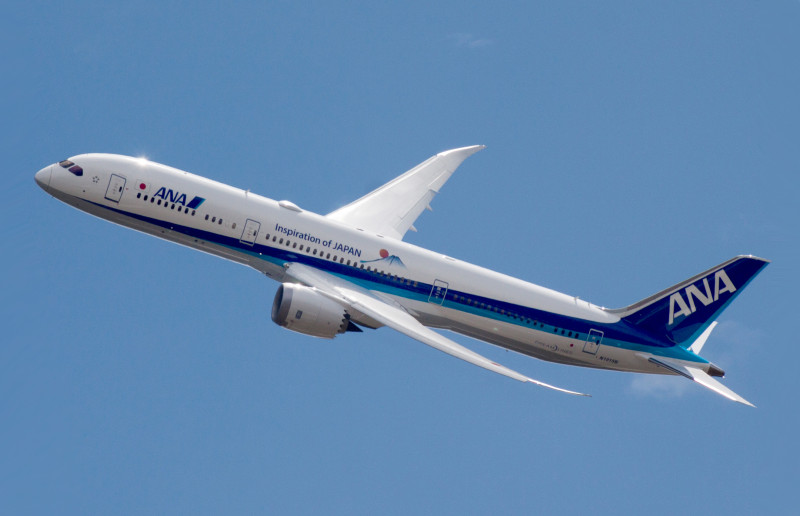Ben Gurion International Airport (Natbag), Israel's primary international airport, is located near Lod and Or Yehuda, serving as the country's busiest airport. Situated 45 km northwest of Jerusalem and 20 km southeast of Tel Aviv, it acts as a central hub for airlines like El Al, Israir, Arkia, and Sundor. Formerly known as Lod Airport, it was renamed in 1973 to honor David Ben-Gurion, Israel's first prime minister. The Israel Airports Authority manages the airport.
5 hours ago : Iran Claims Targeting Ben Gurion Airport, Citing Israeli Vulnerability and BRICS Defense.
Iran claimed responsibility for targeting Ben Gurion Airport, alleging strikes on a biological research center. The IRGC highlighted operational hits, exposing Israeli vulnerabilities. Iran positions itself as the primary defense for BRICS and the Global South.
1933: KLM Service
In 1933, Holland's KLM started stopping at Gaza en route to Batavia, Dutch East Indies (now Jakarta, Indonesia).
1934: Construction Begins
In 1934, construction of the airport began as an airstrip with two unpaved runways on the outskirts of Lydda (now Lod), near Wilhelma, largely at the urging of Airwork Services.
August 1935: First Passenger Service
In August 1935, the first passenger service was inaugurated at the new airport with the Misr Airwork route Cairo—Lydda—Nicosia.
April 1937: LOT Polish Airlines Service
On April 4, 1937, LOT Polish Airlines became the first continental European airline with a regular service to Lydda Airport, which by that time boasted four fully operational concrete runways.
May 1940: Misr Airwork Resumes Flights
In May 1940, Misr Airwork resumed its weekly Cairo—Lydda—Nicosia service after suspending flights upon the British declaration of war.
June 1940: Imperial Airways Service Interrupted
In June 1940, Imperial Airways and later British Overseas Airways Corporation discontinued service to Lydda due to the fall of France during World War II.
February 1942: KLM Route Curtailment
In February 1942, as the Japanese military advanced into Burma and Malaya, KLM curtailed its route to Batavia, making Lydda the eastern terminus.
1943: Airport Renamed RAF Station Lydda
In 1943, the airport was renamed "RAF Station Lydda" and served as a major airfield for military air transport and aircraft ferry operations between military bases in Europe, Africa, the Middle East, and South/Southeast Asia.
1944: Aviron Aviation Company Initiates Service
In 1944, as the German threat in the Middle East subsided, Aviron Aviation Company initiated service four times a week between Lydda and Haifa.
1946: First Civilian Transatlantic Route
In 1946, TWA inaugurated the first civilian transatlantic route from New York City to Lydda Airport.
April 1948: British Give Up Airport
At the end of April 1948, the British relinquished control of the airport.
July 1948: Airport Captured by IDF
On July 10, 1948, during Operation Danny, soldiers of the Israel Defense Forces captured the airport, transferring control to the newly declared State of Israel.
November 1948: Flights Resume
On November 24, 1948, flights resumed at the airport, which was renamed "Tel Aviv-Lod International Airport." 40,000 passengers passed through the terminal that year.
1952: Increased Passenger Traffic
By 1952, the number of passengers passing through the terminal had risen to 100,000 a month.
1969: Terminal 2 Inauguration
In 1969, Terminal 2 at Ben Gurion Airport was inaugurated when Arkia resumed operations there following the Six-Day War.
May 1972: Lod Airport Massacre
On May 30, 1972, the Lod Airport massacre occurred, resulting in 24 deaths and 80 injuries when three members of the Japanese Red Army sprayed machine gun fire into the passenger arrival area.
1973: Airport Renamed
In 1973, Lod Airport was renamed Ben Gurion International Airport in honor of David Ben-Gurion, Israel's first prime minister.
1973: Name Change to Ben Gurion Airport
In 1973, the airport's name was officially changed from Lod to Ben Gurion International Airport, in honor of Israel's first Prime Minister, David Ben-Gurion.
1985: Release of Kozo Okamoto
In 1985, Kozo Okamoto, the surviving terrorist from the Lod Airport massacre, was released as part of a prisoner exchange with the PFLP-GC after receiving a life sentence.
January 1994: Decision to Build Terminal 3
In January 1994, the decision was made to proceed with the design of a new state-of-the-art terminal (Terminal 3) to accommodate increasing passenger traffic.
1997: Extension Plans Approved
In 1997, plans were approved for the extension of runways 03/21 and 08/26 at Ben Gurion Airport to alleviate safety and capacity concerns.
1999: Terminal Built
In 1999, a new terminal was built at Ben Gurion Airport with the intention of managing the crowds expected in 2000.
2000: Millennium Celebrations
In 2000, the expected tourism influx for the millennium celebrations prompted the design of a new state-of-the-art terminal.
2000: Terminal Never Opened
The terminal built in 1999 to handle the crowds expected in 2000, never officially opened.
2000: Natbag 2000 Project Deadline
Work on Natbag 2000, the Terminal 3 project, was scheduled for completion prior to 2000 to handle an expected influx of pilgrims for the Millennium celebrations. The deadline was not met, and the project eventually cost an estimated one billion US dollars.
February 2003: Space Shuttle Columbia Disaster Memorial
In February 2003, the terminal was used for memorial ceremonies upon the arrival of the casket of Col. Ilan Ramon after the Space Shuttle Columbia disaster.
2003: Terminal 1 Closure
In 2003, Terminal 1 was closed.
January 2004: Arrival of Elhanan Tannenbaum
In January 2004, the terminal was used for the arrival of Elhanan Tannenbaum and the caskets of three Israeli soldiers from Lebanon.
October 2004: Terminal 3 Opens
On October 28, 2004, Terminal 3 opened, replacing Terminal 1 as the main international gateway to and from Israel. The inaugural flight was an El Al flight to John F. Kennedy International Airport in New York City.
November 2004: Opening of Terminal 3
On November 2, 2004, Terminal 3 finally opened its doors after a decade of planning and construction.
2004: Concourses B, C, and D Open
In 2004, Concourses B, C, and D of Terminal 3 opened, each equipped with 8 jet bridge-equipped gates and two stand gates.
2004: Growth in Private Jet Activity
In 2004, the IAA released figures showing significant growth in private jet flights (4,059, a 36.5% increase) and users (14,613, a 46.2% increase).
February 2006: Runway Renovation Project
In February 2006, a 24 million NIS renovation project completed on runway 08/26 reinforced the runway and made it suitable for wide-body aircraft such as the Airbus A380.
February 2006: New VIP Wing Announced
In February 2006, the Israel Airports Authority announced plans to invest 4.3 million NIS in a new VIP wing for private jet passengers and crews, to be located in Terminal 1.
December 2006: Airport Ranking
In December 2006, Ben Gurion International Airport ranked first among 40 European airports and 8th out of 77 airports in the world, in a survey conducted by Airports Council International, to determine the most customer-friendly airport.
2006: Bezalel Academy of Arts Centennial Exhibition
In 2006, the "Bezalel Academy of Arts Centennial Exhibition" was held in Terminal 1.
January 2007: Hotel Plans Announced
In January 2007, the IAA announced plans for a 120-bed hotel to be located about 300 meters west of Terminal 3.
February 2007: Domestic Flights Moved to Terminal 1
On February 20, 2007, domestic flight services were moved from Terminal 2 into the newly refurbished Terminal 1 at Ben Gurion Airport.
August 2007: Color Code System Discontinued
Until August 2007, Ben Gurion Airport used a system of color codes on checked baggage. The practice was discontinued after complaints of discrimination.
November 2007: Runway Renovation Completed
In November 2007, a 17 million NIS renovation project was completed on runway 12/30, reinforcing it and making it suitable for future wide-body aircraft.
2007: Best Middle Eastern Airport
Ben Gurion International Airport retained its title as the best Middle Eastern airport in the 2007 survey.
2007: Terminal 1 Reopening
In 2007, Terminal 1 reopened.
January 2008: New VIP Terminal Planned
In January 2008, the IAA announced plans to construct a new 1,000-square-metre VIP terminal next to Terminal 3.
July 2008: Reopening for Summer Flights
In July 2008, Terminal 1 reopened to cater for summer charter and low-cost flights.
September 2008: New ILS Activated
In September 2008, a new ILS (Instrument Landing System) serving runway 12/30 was activated at Ben Gurion Airport.
October 2008: Temporary Closure
In October 2008, Terminal 1 temporarily closed for further renovation.
2008: Best Middle Eastern Airport
Ben Gurion International Airport retained its title as the best Middle Eastern airport in the 2008 survey.
2009: Best Middle Eastern Airport
Ben Gurion International Airport retained its title as the best Middle Eastern airport in the 2009 survey.
2009: Railway Usage
In 2009, almost 3.3 million passengers used the Israel Railways line to and from Ben Gurion Airport.
2009: Reopening in Summer
Terminal 1 reopened again in the summer of 2009 and was expected to reach a three-month capacity of 600,000 passengers on international flights.
2010: Low-Cost Carriers Operate Year-Round
As of 2010, several low-cost carriers' international flights were operating out of Terminal 1 year-round, including Vueling flights to Barcelona and easyJet flights to London (Luton), Manchester, Geneva, and Basel.
2010: Construction Began
In 2010, construction began on the extension of runways 03/21 and 08/26 at Ben Gurion Airport, as part of plans approved in 1997 to alleviate safety and capacity concerns.
2011: Runway Closed
By late 2011, runway 03/21 was closed and most of the activity in the military apron to the east of the runway was permanently relocated to the Nevatim Airbase in southern Israel.
April 2014: X-ray Machines Removed
In April 2014, the main X-ray machines were removed from the passenger queuing area in Terminal 3, and baggage screening began being performed after the baggage was checked-in by airline representatives.
May 2014: Runway Reopened
In late May 2014, runway 03/21 was reopened after being rebuilt and lengthened to 2,772 m (9,094 ft), allowing it to handle most types of aircraft. It is equipped with an ILS and mostly handles landings from north to south.
May 2014: Construction Completed
On May 29, 2014, the four-year, 1 billion NIS construction project to extend runways 03/21 and 08/26 was completed. This allows for simultaneous landings and take offs on runways 08/26 and 03/21 and thus more than double the number of aircraft movements which can be handled at peak times, while increasing the overall level of air safety in and around the airport.
2014: Flight Bans during Gaza Conflict
During the 2014 conflict with Gaza, several airlines banned their flights to the airport for a couple of days.
2014: Main Runway Reopened
From 2011 until early 2014, the main runway at Ben Gurion Airport was closed to accommodate the extension of runway 03/21 and other construction activity.
2015: Terminal 1 Expansion
In 2015, due to increased demand and following another expansion of the terminal, the Israel Airports Authority made Terminal 1 available to all low-cost carriers under certain conditions.
January 2017: Furthest Nonstop Flight
On January 2, 2017, the furthest nonstop flight to depart the airport was a private Airbus A340-500 owned by Sheldon Adelson, flying to Honolulu over the Arctic Ocean, a journey projected to last 17 hours and 40 minutes.
June 2017: Terminal 1 Renovations
Beginning on June 19, 2017, following several months of renovations, Terminal 1 passengers began being bussed directly to their flights from Terminal 1, although incoming passengers continue to be handled in Terminal 3. Renovations included adding duty-free shops, restaurants, and cafes, and equipping the terminal with advanced checked-baggage handling and screening systems.
December 2017: IAA Announces Expansion Plan
In December 2017, the IAA announced a long-term expansion plan for Ben Gurion Airport, estimated to cost approximately NIS 9 billion. The plans included further expansion of Terminal 1, a new dedicated domestic flights terminal, a major expansion of Terminal 3's landside terminal, construction of Concourse A, and relocation of air cargo facilities.
2017: Tender for Hotel Published
In late 2017, the tender for the hotel was published by the IAA.
2017: Terminal 1 Procedure Change
In the summer of 2017, Terminal 1 began using the same baggage screening procedure as Terminal 3, where baggage screening is performed after the baggage is checked-in by airline representatives.
August 2018: Tender for New Terminal
In August 2018, the IAA published a tender for the construction and operation of a new terminal dedicated to handling private and executive aircraft traffic.
2018: Concourse E Completed
In 2018, concourse E of Terminal 3 was completed.
2018: Temporary Tent Erected
In the spring of 2018, a temporary large, air-conditioned tent was erected adjacent to Terminal 3 to ease immediate overcrowding problems. It housed 25 check-in counters and security screening facilities.
July 2019: Flights Moved From Sde Dov
In July 2019, commercial flights from Sde Dov Airport, which handled more domestic passengers annually than TLV, were moved to Ben Gurion Airport after Sde Dov's closure.
2019: Opening of Ramon Airport
In 2019, Ramon Airport was opened as an alternative entry point into Israel, addressing concerns that Ben Gurion International Airport was a single point of failure.
December 2020: New App Payment System Introduced
In December 2020, a new app payment system was introduced. The apps have a different, simpler fare system. The two supporting routing and payment are: Cello, Moovit, Pango, and Rav-Pass.
2020: COVID-19 Testing in Tent
Between 2020 and 2022, the temporary tent erected adjacent to Terminal 3 was used for compulsory COVID-19 testing for all arriving passengers.
2021: Construction of New Interchange
In late 2021, construction began on a new interchange that will provide additional access to Ben Gurion Airport from Highway 1, reducing the distance vehicles must travel to access the airport's main terminal from the direction of Tel Aviv.
2022: COVID-19 Testing in Tent
Between 2020 and 2022, the temporary tent erected adjacent to Terminal 3 was used for compulsory COVID-19 testing for all arriving passengers.
October 2023: Airline Reduction During Gaza War
In October 2023, with the outbreak of the Gaza war, the number of airlines that flew into the airport dropped to just 7.
2023: Passenger Traffic
In 2023, Ben Gurion International Airport handled 21.1 million passengers, solidifying its position as one of the busiest airports in the Middle East and among the top five for passenger experience and security.
February 2024: Airline Count During Gaza War
By February 2024, only 45 airlines flew into the airport due to the Gaza war.
May 2025: Ballistic Missile Attack
On May 4, 2025, a ballistic missile launched by Houthis during the Gaza war struck a grove near an access road within the airport's perimeter, injuring six people. Two others were treated for acute anxiety.
Mentioned in this timeline
World War II - was a global conflict between the...

John F Kennedy JFK was the th U S President...
France officially the French Republic is primarily in Western Europe...

Barcelona is a major city located on the northeastern coast...
Lebanon is a country in the Levant region of West...
Israel officially the State of Israel is a country in...
Trending
41 minutes ago Manchester Officer Involved in Hotel Shooting, Returning Fire; Investigation Ongoing

41 minutes ago Istanbul Metro Stations Closed Due to Pride Parade and Governor's Decision.
2 hours ago Singapore Airlines faces lawsuit after shrimp allergy incident leads to emergency landing.

2 hours ago Keir Starmer Urges Iran to Negotiate, Supports US Strike to Prevent Nuclear Weapons

2 hours ago CNN Corrects Christiane Amanpour's Error Regarding Soroka Hospital Coverage: Details Revealed
3 hours ago NY schools adjust schedules due to excessive heat, prioritizing student safety concerns.
Popular

Sergio Gor is a Maltese American businessman and political operative...

Cristiano Ronaldo often called CR is a Portuguese professional footballer...

The Boeing Dreamliner is an American wide-body airliner developed by...

Kristi Noem is an American politician and Air Force Auxiliary...

Benjamin Netanyahu is a prominent Israeli politician currently serving as...

Kash Patel is an American lawyer and former federal prosecutor...